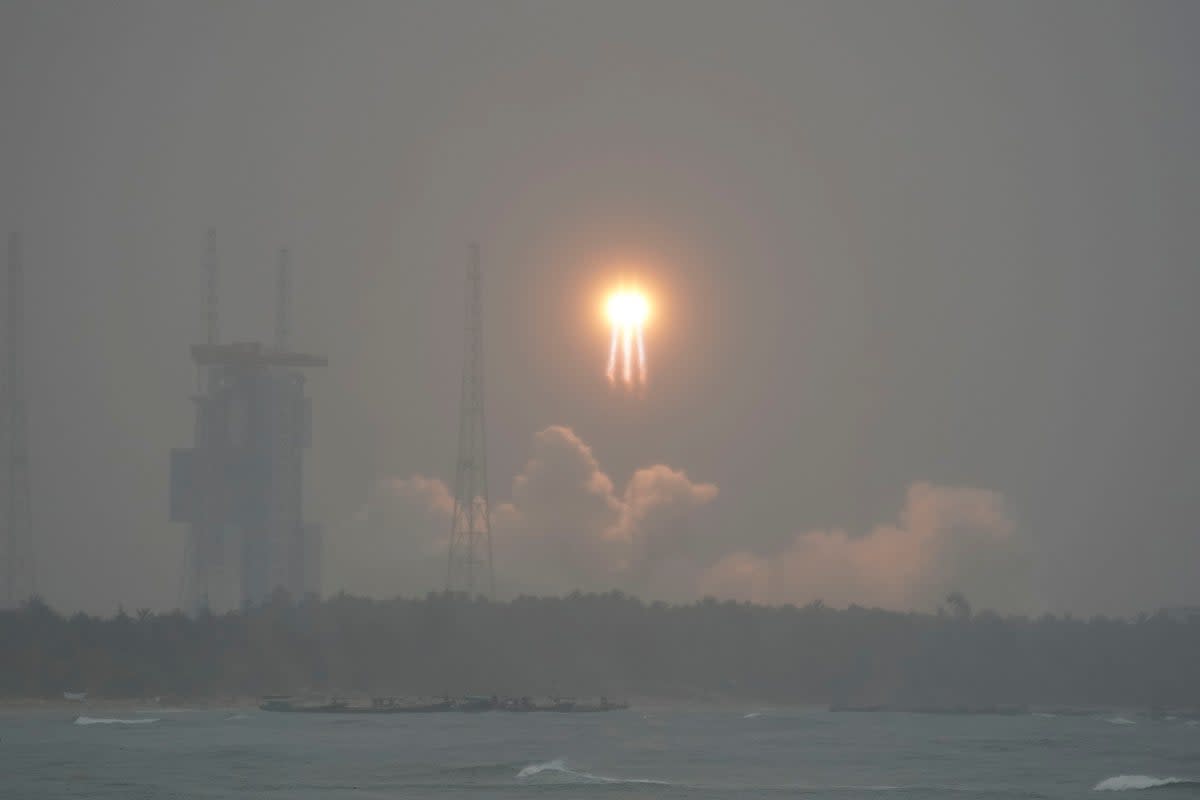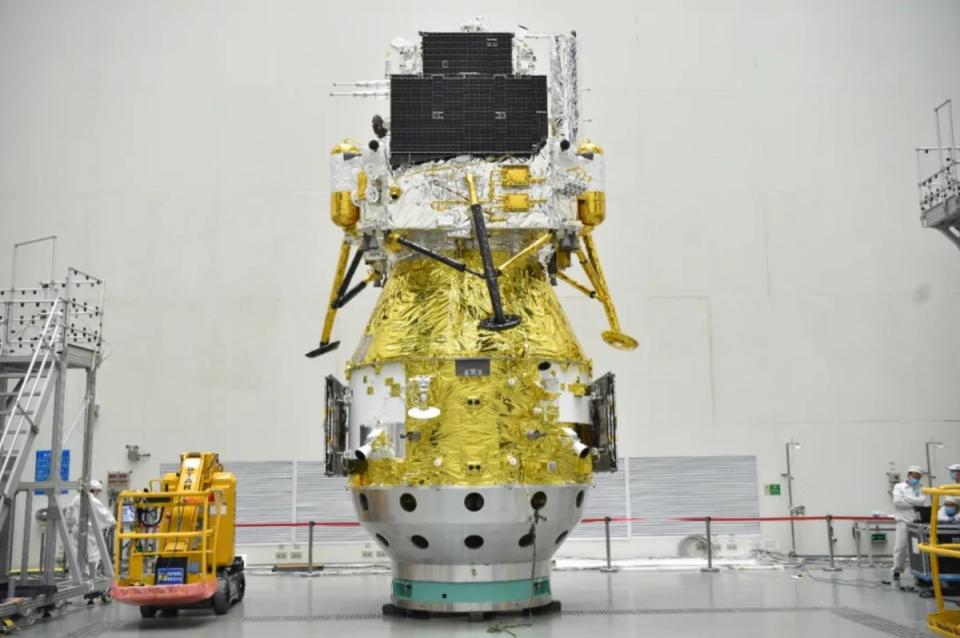China may have sent secret robot to Moon’s far side in Chang’e 6 launch

China’s Chang’e 6 mission launched last week to the Moon is carrying an undisclosed rover to the lunar far side, new images reveal.
Observers have spotted a strange new spacecraft strapped to the side of a Chang’e 6 lander scheduled to touch down on the Moon next month.
China’s space agency successfully launched its Chang’e 6 mission payload aboard an autonomous Long March 5 rocket on Friday, aiming to be the first-ever nation to return rock samples from the lunar far side.
The mission’s main payload is expected to touch down in a crater near the Moon’s south pole in early June, where a lander would scoop up 2kg of rocks and send them back to Earth in a return module.
China previously disclosed that the spacecraft also carries with it payloads from France, Sweden, Italy and Pakistan to the Moon.
Yeah, okay. That looks like a previously undisclosed mini rover on the side of the Chang'e-6 lander lol. Via CAST: https://t.co/gS0Jy5L9hw pic.twitter.com/9vvTnribpl
— Andrew Jones (@AJ_FI) May 3, 2024
But new photos reveal an undisclosed small gray object with wheels strapped to the lander’s side that also appears to have been launched with the mission.

“That looks like a previously undisclosed mini rover on the side of the Chang’e-6 lander,” space reporter Andrew Jones, who closely monitors China’s space missions, wrote on X.
While the mystery rover’s main task remains unknown, a statement from the Shanghai Institute of Ceramics, which provided components for the mission, suggests that the undisclosed robot has an infrared imaging spectrometer.
This is likely not the first time a Chinese mission to the Moon has carried a secret payload.
In 2022, an out-of-control rocket booster that crashed onto the Moon, forming a bizarre crater, is widely suspected to have carried an undisclosed payload.
While the Chinese government has disputed claims that the rocket was one of their own, analysis of data on the trajectory and light from the object “show conclusively” that it was a “Long March 3C rocket body (R/B)” from China’s Chang’e 5-T1 mission.
Researchers from the University of Arizona in the US also suspect that the rocket booster had a large mass on the top balancing the two engines at the bottom.
Nasa chief Bill Nelson has also raised concerns previously about the secretive nature of China’s space programs.
“China has made extraordinary strides, especially in the last 10 years, but they are very, very secretive,” he told lawmakers at Capitol Hill earlier this year.
“We believe that a lot of their so-called civilian space programme is a military programme. And I think, in effect, we are in a race,” Mr Nelson said, urging the US to “not let down our guard”.


